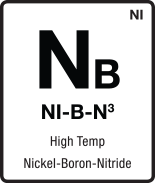Medical
KEY BENEFITS:
- Biocompatible Tested ISO 10993-10 / ISO 10993-6 / ISO 10993-11
- Arrests corrosion from sterilization and laser marking while maintaining new appearance
- Increases wear resistance
- Maintains cutting edges
- Provides a hard, scratch resistant, nonstick, easy clean surface
- Increases surface hardness
- Eliminates galling, fretting, spalling
- Ability to easily remove and reapply
- Arrests metallic debris and particulate matter
- Provides smooth sliding surfaces
- Reduces high intensity light reflection/refraction and glare
- Provides long lasting, clean, pristine new appearance
- Chemical and detergent resistant
- Hydrophobic
Armoloy TDC is a precise, biocompatible, pure, metallic chromium coating for medical, surgical, laboratory and clean room environments. Highly trained coating professionals and strict process controls allow for a uniform coating that is unparalleled in performance. The coatings are completely inert, non-magnetic, USP 10993-10, USP 10993-6, USP 10993-11 tested. The coating improves the physical appearance of medical instruments and, more importantly, provides functional enhancements to their performance
- United States Pharmacopeia; ISO 10993-10
- USP Intracutaneous Study
- TU013-800
- No Localized Tissue Reaction
Irritation tests are utilized to assess the irritation potential of medical devices, bio-materials, or their extracts exposed to eye, skin, or mucous membranes. The test(s) are performed using a model appropriate for the route (skin, eye, mucosa) and duration of exposure or contact.
- United States Pharmacopeia; ISO 10993-6
- USP Muscle Implantation Study 7 Day
- TU014-807
- Non Irritating to Muscle Tissue
Implantation tests are performed to evaluate the local d pathological effects on living tissue, at both the gross level and microscopic level, after implantation of samples of medical Implantation tests are performed to evaluate the local pathological effects on living tissue, at both the gross level and microscopic level, after implantation of samples of medical devices or bio-materials. The implant location is based on the clinical site of use. Implant duration’s are based on the need to evaluate the tissue response over multiple intervals and along with the sample’s inertness and absorptive characteristics.
- U.S. Pharmacopeial Convention; ISO 10993-11
- Acute Systemic – No Systemic Toxicity
- TU012-500
- No Systemic Toxicity
Systemic Toxicity tests evaluate the generalized biological effects to organs and tissues following exposure to a medical devices, bio-material, or their extracts. The term systemic implies that the exposure occurs by one route and the toxic substance is carried to distant locations causing an adverse effect. Systemic toxicity is typically evaluated in studies of acute, sub-acute, sub-chronic, and chronic duration based on the device’s intended exposure.
- Hydrogen Embrittlement Tested per ASTM F519
- Salt Spray Tested (50 hour) per ASTM B117
- Adhesion Tested per ASTM B571 and BAC5709
- Hardness Tested per ASTM E384-17 and BAC5709
- Porosity Tested per AMS 2460
- Custom Testing per Customer Specifications
- NAMSA Tested USP 10993-10, 10993-6, 10993,11
NAMSA Test Results:
OUR COATINGS
A SOLUTION FOR EVERY APPLICATION

Armoloy TDC is an excellent candidate for application to nearly every industrial steel, from tool steels such as S-7 H-13...

Gullon is a two-step process that combines Armoloy TDC with one of a variety of Solid Film Coatings to produce an inherently...

Composite Nickel Boron Nitride products designed for aggressive wear and corrosion environments that...

Bi-Protec is a two-step process that combines electroless nickel with an overlay of Armoloy TDC or XADC. Excellent for highly corrosive...

For applications involving moderate to severe corrosion, Armoloy of Texas’ high-phosphorus electroless nickel can...

Xylan coatings provide a dry film surface lubrication and reinforcing resin bonded with PTFE for corrosion protection...

Molybdenum disulfide is a naturally occurring black colored, solid compound that feels slippery to the touch. MolyB excels...
